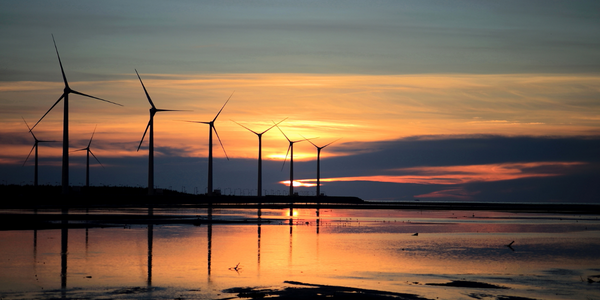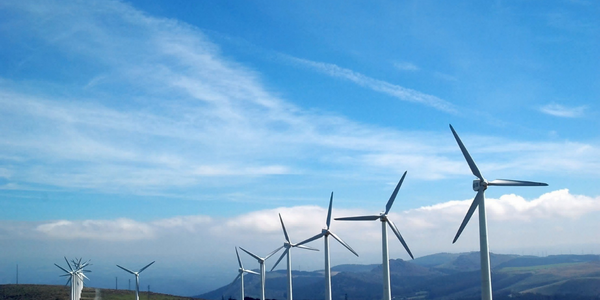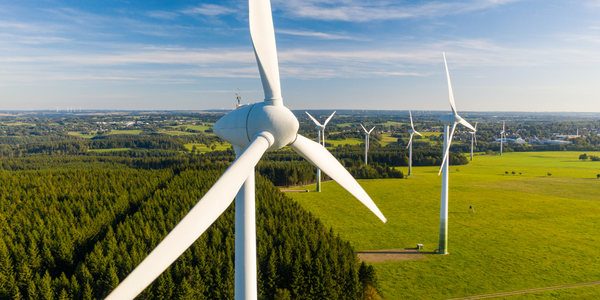Arab Maritime Petroleum Transport Company Leverages StormGeo's Solution for Enhanced Environmental Performance

Technology Category
- Functional Applications - Fleet Management Systems (FMS)
- Sensors - Environmental Sensors
Applicable Industries
- Renewable Energy
- Transportation
Applicable Functions
- Logistics & Transportation
- Quality Assurance
Use Cases
- Indoor Air Quality Monitoring
- Outdoor Environmental Monitoring
About The Customer
Arab Maritime Petroleum Transport Company (AMPTC) is a leading company in the maritime petroleum transport industry. The company operates a fleet of tankers and is committed to adhering to environmental regulations and reducing its carbon footprint. AMPTC is constantly seeking innovative solutions to improve the environmental performance of its fleet and comply with evolving GHG regulations. The company conducts intensive market research to find the most efficient solutions for its operations. AMPTC recently entered into a three-year agreement with StormGeo to implement its Environmental Performance module in s-Insight across all its tanker vessels.
The Challenge
Arab Maritime Petroleum Transport Company (AMPTC) was in need of an effective solution to manage the environmental performance of its fleet and comply with evolving Greenhouse Gas (GHG) regulations. The recent introduction of the Carbon Intensity Indicator (CII) by the International Maritime Organization (IMO) posed significant challenges to tanker owners like AMPTC. The company was seeking a solution that could help it navigate these sustainability regulations with ease and achieve long-term reductions in CO2 emissions. AMPTC conducted intensive market research and analysis to find the most efficient solution for its fleet of tankers.
The Solution
AMPTC decided to implement StormGeo's cutting-edge environmental performance management solution across its entire fleet. The company entered into a three-year agreement to use StormGeo’s Environmental Performance module in s-Insight on all its tanker vessels. This technology is expected to transform AMPTC's fleet's commercial and environmental performance by improving data quality and facilitating seamless data management. The Environmental Performance solutions from StormGeo will assist AMPTC in navigating sustainability regulations with greater ease. Furthermore, through comprehensive validation, transfer, and display of emission data, AMPTC is equipped to achieve long-term reductions in CO2 emissions. The module is part of StormGeo's s-Suite, a complete, one-stop shipping solution to optimize time, fuel, and vessel performance while ensuring navigational and environmental compliance.
Operational Impact

Case Study missing?
Start adding your own!
Register with your work email and create a new case study profile for your business.
Related Case Studies.

Case Study
Remote Monitoring & Predictive Maintenance App for a Solar Energy System
The maintenance & tracking of various modules was an overhead for the customer due to the huge labor costs involved. Being an advanced solar solutions provider, they wanted to ensure early detection of issues and provide the best-in-class customer experience. Hence they wanted to automate the whole process.

Case Study
Vestas: Turning Climate into Capital with Big Data
Making wind a reliable source of energy depends greatly on the placement of the wind turbines used to produce electricity. Turbulence is a significant factor as it strains turbine components, making them more likely to fail. Vestas wanted to pinpoint the optimal location for wind turbines to maximize power generation and reduce energy costs.

Case Study
Siemens Wind Power
Wind provides clean, renewable energy. The core concept is simple: wind turbines spin blades to generate power. However, today's systems are anything but simple. Modern wind turbines have blades that sweep a 120 meter circle, cost more than 1 million dollars and generate multiple megawatts of power. Each turbine may include up to 1,000 sensors and actuators – integrating strain gages, bearing monitors and power conditioning technology. The turbine can control blade speed and power generation by altering the blade pitch and power extraction. Controlling the turbine is a sophisticated job requiring many cooperating processors closing high-speed loops and implementing intelligent monitoring and optimization algorithms. But the real challenge is integrating these turbines so that they work together. A wind farm may include hundreds of turbines. They are often installed in difficult-to-access locations at sea. The farm must implement a fundamentally and truly distributed control system. Like all power systems, the goal of the farm is to match generation to load. A farm with hundreds of turbines must optimize that load by balancing the loading and generation across a wide geography. Wind, of course, is dynamic. Almost every picture of a wind farm shows a calm sea and a setting sun. But things get challenging when a storm goes through the wind farm. In a storm, the control system must decide how to take energy out of gusts to generate constant power. It must intelligently balance load across many turbines. And a critical consideration is the loading and potential damage to a half-billion-dollar installed asset. This is no environment for a slow or undependable control system. Reliability and performance are crucial.

Case Study
Airport SCADA Systems Improve Service Levels
Modern airports are one of the busiest environments on Earth and rely on process automation equipment to ensure service operators achieve their KPIs. Increasingly airport SCADA systems are being used to control all aspects of the operation and associated facilities. This is because unplanned system downtime can cost dearly, both in terms of reduced revenues and the associated loss of customer satisfaction due to inevitable travel inconvenience and disruption.

Case Study
Remote Monitoring and Control for a Windmill Generator
As concerns over global warming continue to grow, green technologies are becoming increasingly popular. Wind turbine companies provide an excellent alternative to burning fossil fuels by harnessing kinetic energy from the wind and converting it into electricity. A typical wind farm may include over 80 wind turbines so efficient and reliable networks to manage and control these installations are imperative. Each wind turbine includes a generator and a variety of serial components such as a water cooler, high voltage transformer, ultrasonic wind sensors, yaw gear, blade bearing, pitch cylinder, and hub controller. All of these components are controlled by a PLC and communicate with the ground host. Due to the total integration of these devices into an Ethernet network, one of our customers in the wind turbine industry needed a serial-to-Ethernet solution that can operate reliably for years without interruption.

Case Study
IoT-based Fleet Intelligence Innovation
Speed to market is precious for DRVR, a rapidly growing start-up company. With a business model dependent on reliable mobile data, managers were spending their lives trying to negotiate data roaming deals with mobile network operators in different countries. And, even then, service quality was a constant concern.






